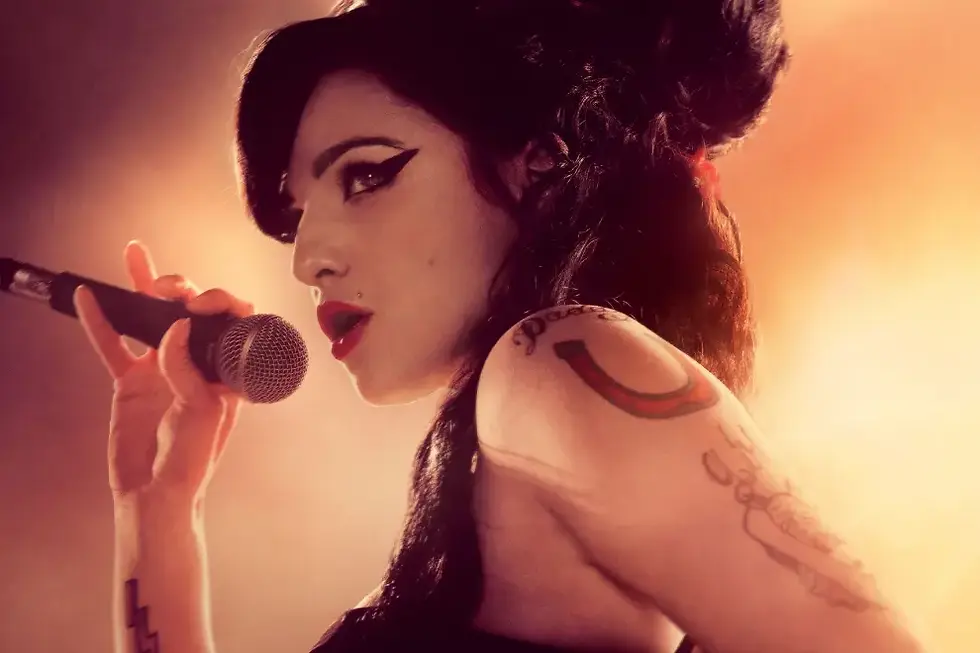Bob Dylan Biopic, A Complete Unknown, Vibrates With A Palpable Sense of Joy
- Bernard Zuel

- Jan 23
- 4 min read

A COMPLETE UNKNOWN
Written by Jay Cocks and James Mangold. Directed by James Mangold
THOUGH BUILT AROUND A CHARISMATIC and physically potent performance by Timothee Chalamet, whose hunched shoulders and mumbles, cocked eyebrow and certain tone, averted eyes and dismissive sneer, twitchy slightness and intense allure, creates a Bob Dylan in 1961-1965 who may or may not be real but feels true, A Complete Unknown is not exactly a film about Bob Dylan.
It is instead about the idea of Dylan. His, ours, his detractors’, his supporters’, his colleagues’ and his lovers’, his biographers’ in print and film, and what we believe we need in that idea. Or what we want to believe about a man who created his past, not always subtly, and kept recreating his present, while casting aside what no longer worked and who no longer mattered in the pursuit of … well, what? Truth? Art? Invention? Survival? The sheer act of creation? (See also J. Mitchell, as masterfully examined by Ann Powers in last year’s Traveling: On The Path Of Joni Mitchell.)
That does not mean it goes anywhere near as bold or as intellectually curious as Todd Haynes’ 2007 film, I’m Not There, which provocatively explored the idea of multiple versions of Dylan using multiple actors, looks and sexes. This is much more conventional in every way than that, though some of what is depicted happened, some of it is in dispute, and some of it – and some of the characters, such as the blues singer Jesse Moffette, as played by Big Bill Morganfield – are fictions of writers Jay Cocks and James Mangold, and no element is given greater weight than others.

(And I include in here the now infamous moment when an audience member, seemingly outraged by Dylan’s turn from acoustic folk to electric rock, called out “Judas” or traitor, to be met by Dylan’s “I don’t believe you.” Legend has it that this happened in 1966 at the Albert Hall in London, but in fact it was in Manchester, and now Mangold puts it in the film’s rowdy climax at the 1965 Newport Festival.)
Where it reaches similar territory to Haynes is in the sense that Chalamet’s Dylan is often a reflection of whomever it is seeing him and wanting him for their purposes, not his. The devotee of Woody Guthrie and student of the blues, the new generation leader of folk’s protest arm, the avatar of teenage rock’n’roll’s turn to adult rock: he is all of those and none of them because exactly what he wants and what he wants to be is, in Mangold’s hands, indecipherable. Possibly, probably, even to Dylan.
The film is not immune to this fandom and projection as well, of course. It is sometimes giddy in the presence of genius unveiled or promised with the obligatory film moment of a song being created that elicits looks of stunned silence from observers (Pete Seeger, as played with sympathy and edge of need by Edward Norton) or the thrill and potency when the sometimes spiky, always wired together Dylan and Joan Baez (Monica Barbaro, compelling and convincing in a performance to all but match Chalamet) sing together on stage.
But this is hardly a serious criticism because it is these moments, these buzzing currents of connection and energy, that lift a cinema-watching audience as much as it must have the audiences in those halls, rooms and festival lawns, or those bedrooms and back rooms and club corners. The excitement of performance, viewed up close as Phedon Papamichael's camera steps in with intimacy, can smack you upside the head just as potently as the shock of bright lights and rolling waves of audience energy does the performers.
Where the script falls short is in making sense of timing and interactions, of motivations and repercussions – of the story around the story.

It is not really a question of needing to put everything in or explaining every stage of Dylan’s career at this point – though more would not have hurt. It is that both relatively knowledgeable fans and those for whom Dylan is closer to an adjective than a noun, could benefit from a brief but better sense of the New York folk scene in which Dylan arrives and eventually thrives, unless Cocks and Mangold want to point us to the Coen brothers’ wholly fictional, heavily bitter, but often true Inside Llewyn Davis for further study.
They would appreciate a clearer sense of what the intellectually advanced and socially aware girlfriend Suze Rotolo – here renamed, rumour has it at Dylan’s request, Sylvie Russo, made blonde, and played by an under-utilised Elle Fanning – brought to help shape the half-formed Dylan, unless Cocks and Mangold think Dylan’s amusingly imagined, occasionally true “memoir”, Chronicles, might suffice.
And they’d value a little more awareness of the mid ‘60s environment where blues and rock and folk and pop and country were rubbing hard up against, and bleeding into, each other, rather than just waiting for Dylan to miraculously blow it all apart and reconstitute it. Everyone did project onto Dylan their need, and Mangold is no different to The Beatles (never mentioned here), Seeger, his manager Albert Grossman (slyly balanced as equal parts grasping and awed by Dan Fogler) or the portrayed-as-Salieri-ish Dave Von Ronk (Joe Tippett).
But for all that grumbling, A Complete Unknown does vibrate with a palpable sense of joy – in discovery, in being near brilliance, in thinking we may be know an unknowable – and pleasure. Whichever Dylan you choose to, or need to, believe in.
A Complete Unknown is in cinemas today.













Comments